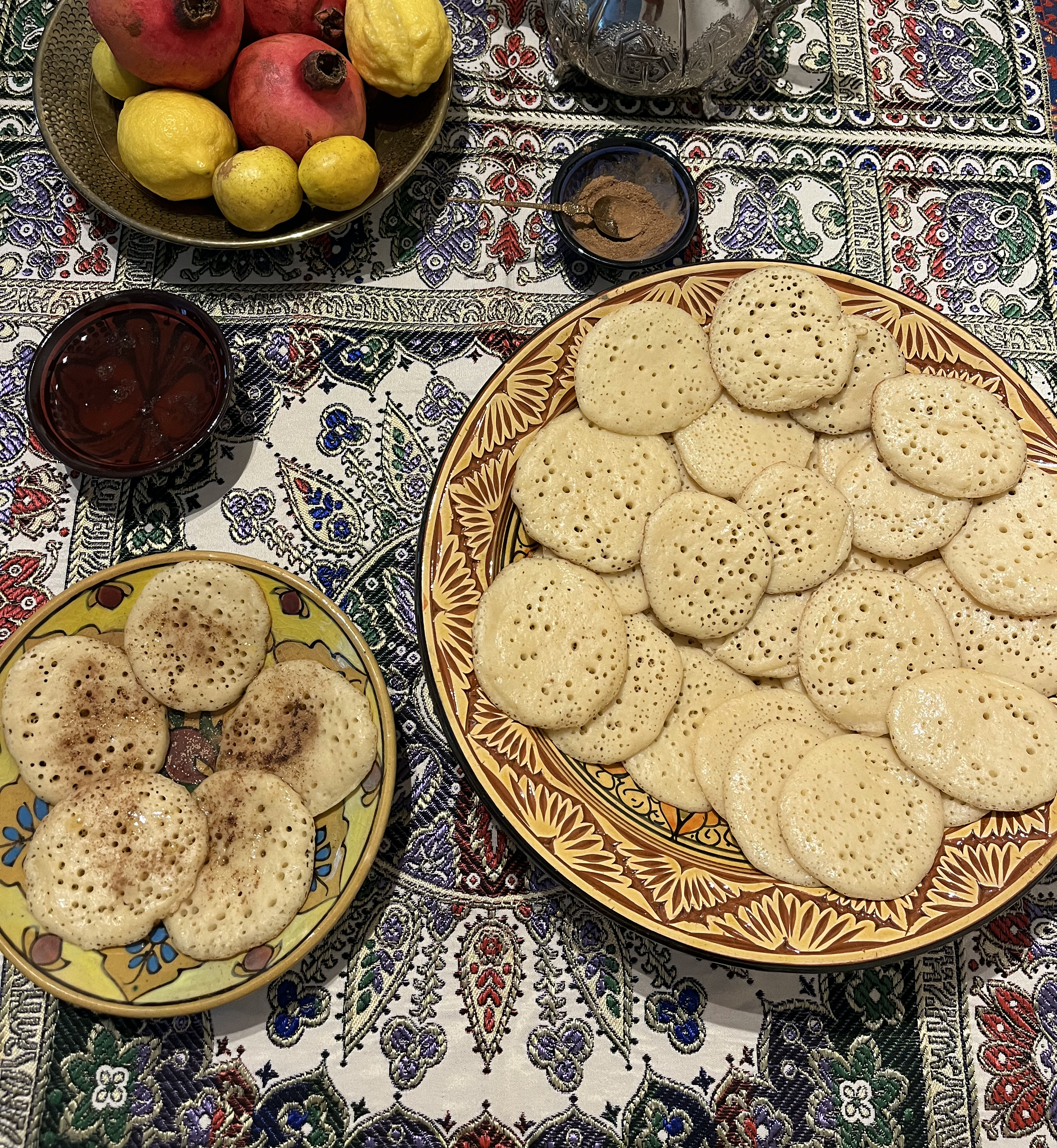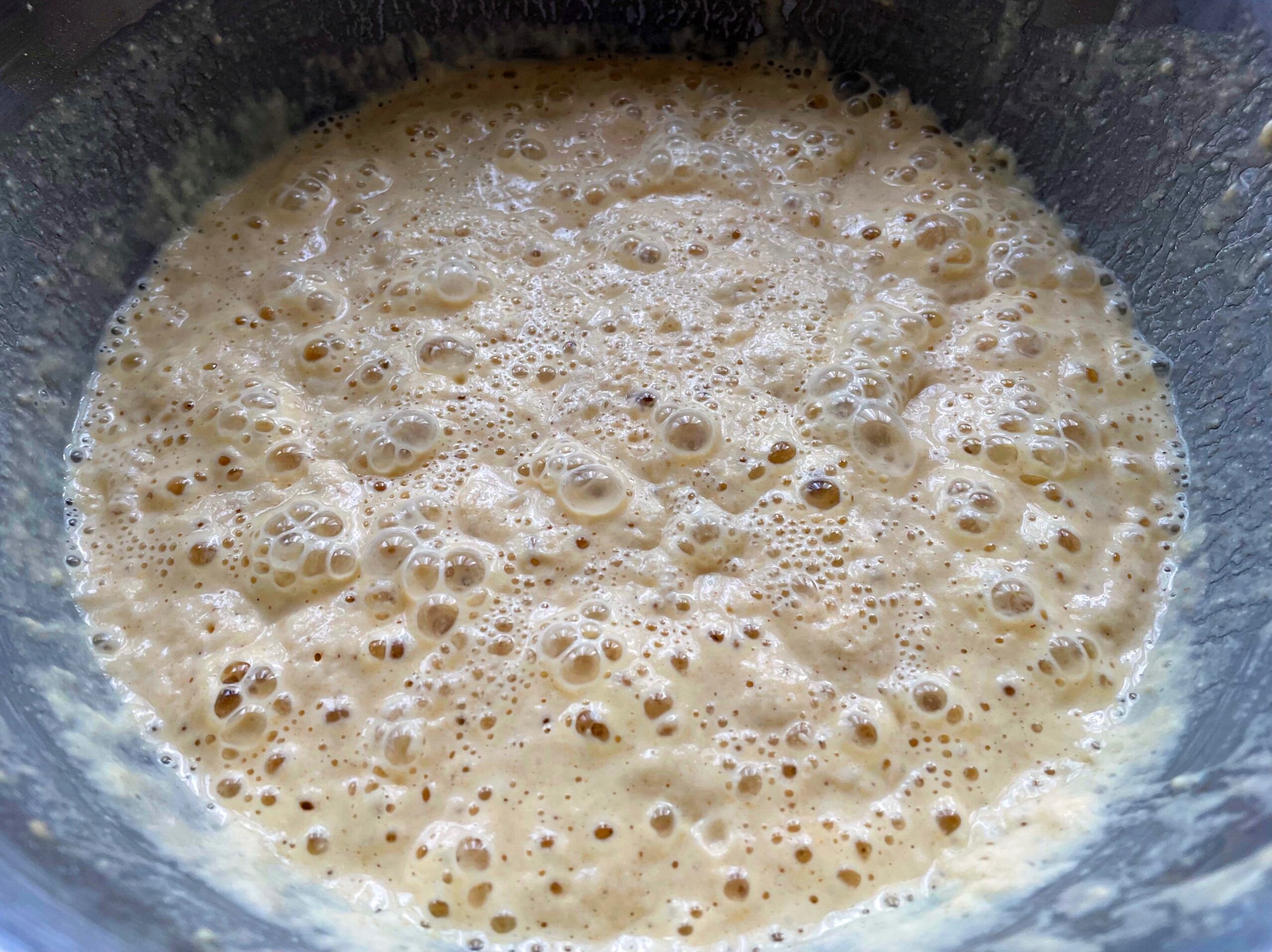This is the Andalusian variant of today’s qatayif, which is a folded crepe with a filling of cream or nuts especially associated with Ramadan all over the Muslim world. Recipes for this type of crepe can be found in a number of cookery books. The one recreated here is from a 13th-century Tuniso-Andalusian treatise. The typical feature — then as now — is that the batter is cooked on only one side.
The word qatayif — though the linguistically correct spelling is, in fact, qata’if (قطائف) — is the plural of qatifa (قطيفة), which denoted a kind of cover to be wrapped around the body when sleeping. This type of qatayif was called mushahhada, which is derived from shuhd, meaning ‘comb honey’.
It starts off with semolina, hot water, yeast and salt. Once you have a batter of the desired consistency, it is dropped into a pan in the form of small round crepes. Once little holes appear on the top, i.e. the uncooked side, remove them, and put in others. The batter can also be added with some salt and milk, if needed. Once you have finished the batch, serve the crepes in a bowl and pour on boiled honey mixed with clarified or fresh butter. Finally, sprinkle on pepper, cinnamon and sugar, and then enjoy!
The present-day qatayif are usually deep-fried after stuffing and then drenched in honey or syrup, though there is an unfried stuffed variety, known as qatayif asafiri (قطائف عصافيري), which translates as ‘the sparrows’ qatayif‘. The Andalusian preparation here is actually closest to the modern Moroccan pancake, the baghrir (بغرير), known in Tunisia as ghrayef (غرايف), which is eaten without a filling, just dipped in butter and honey.



